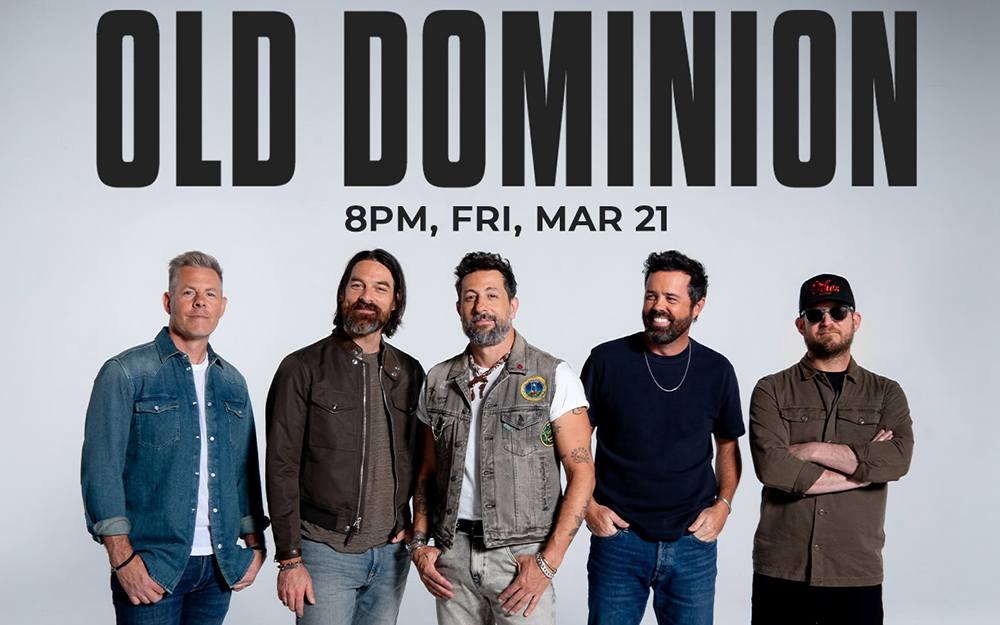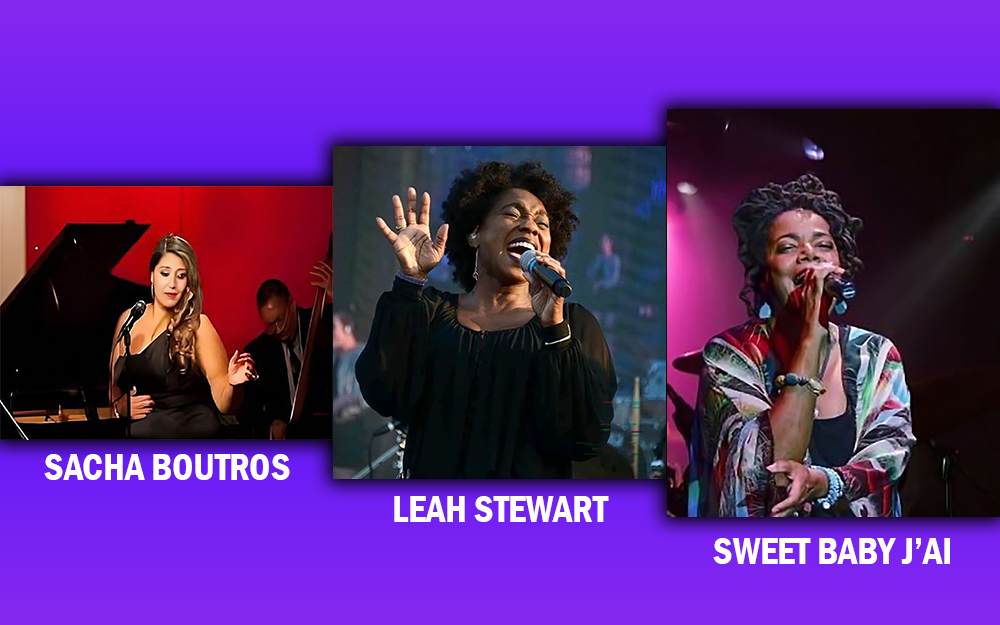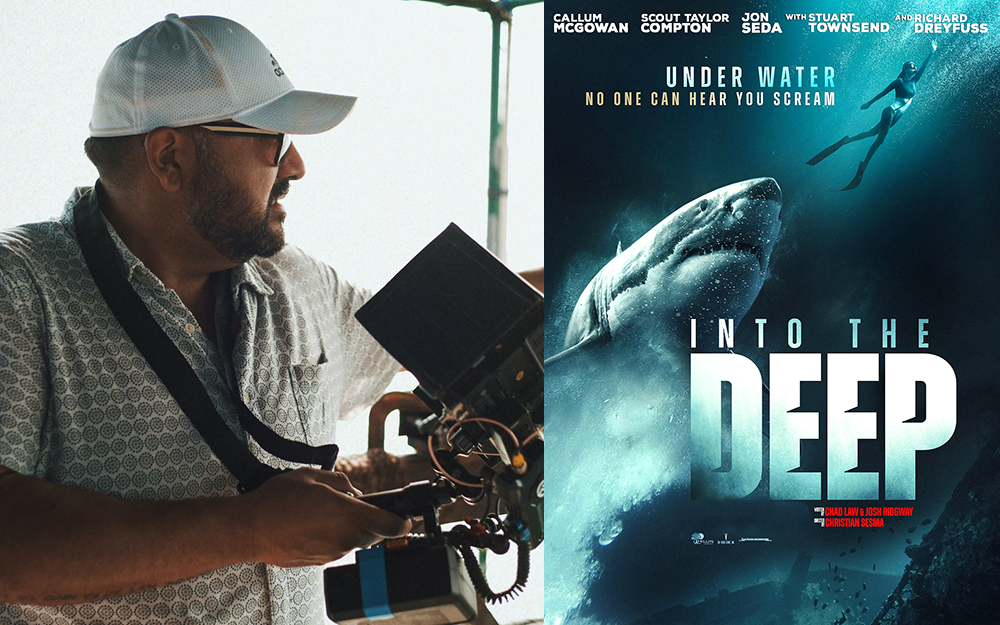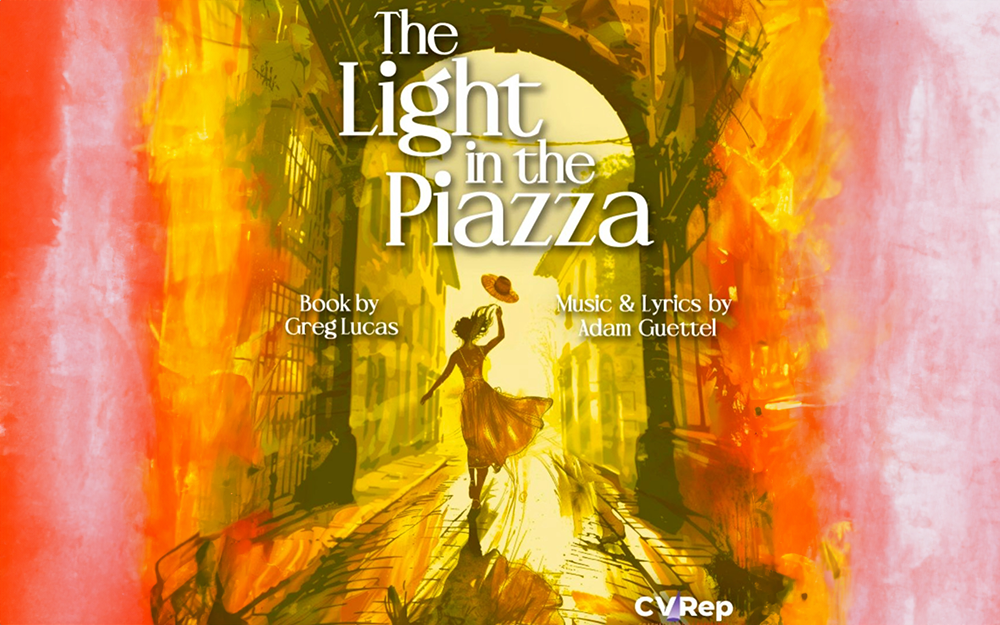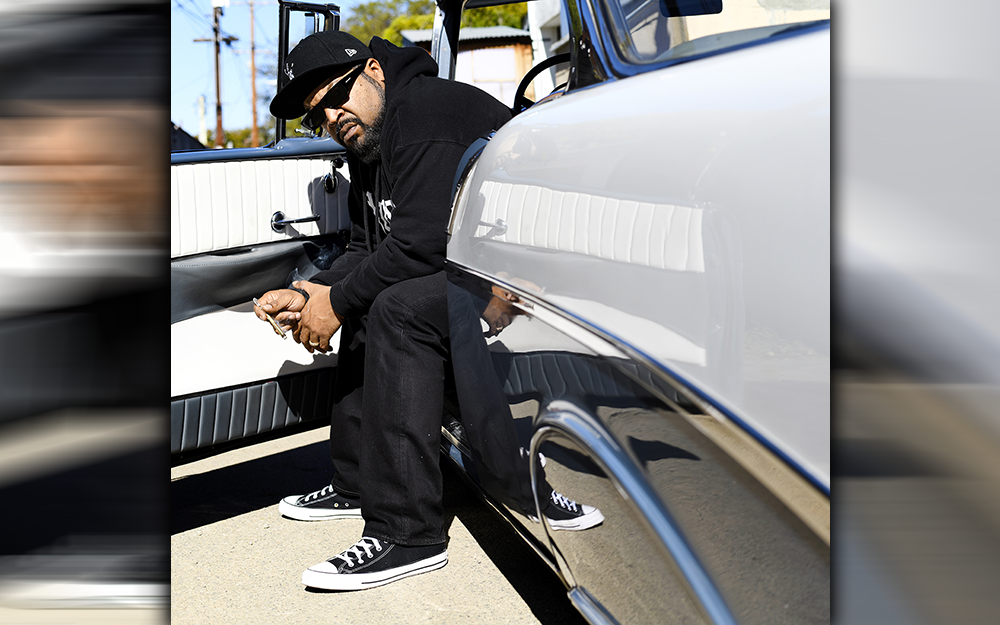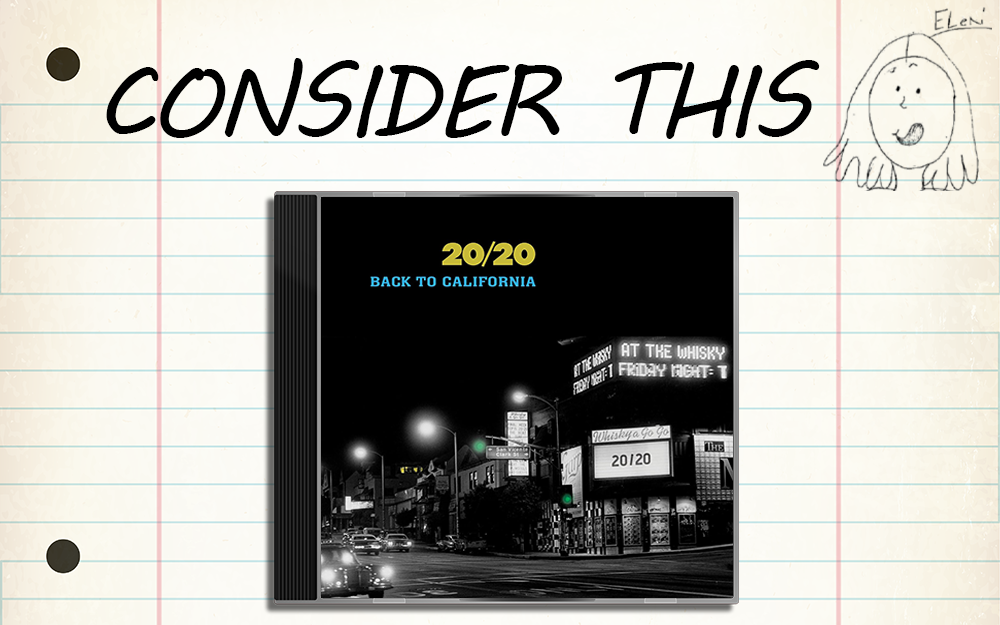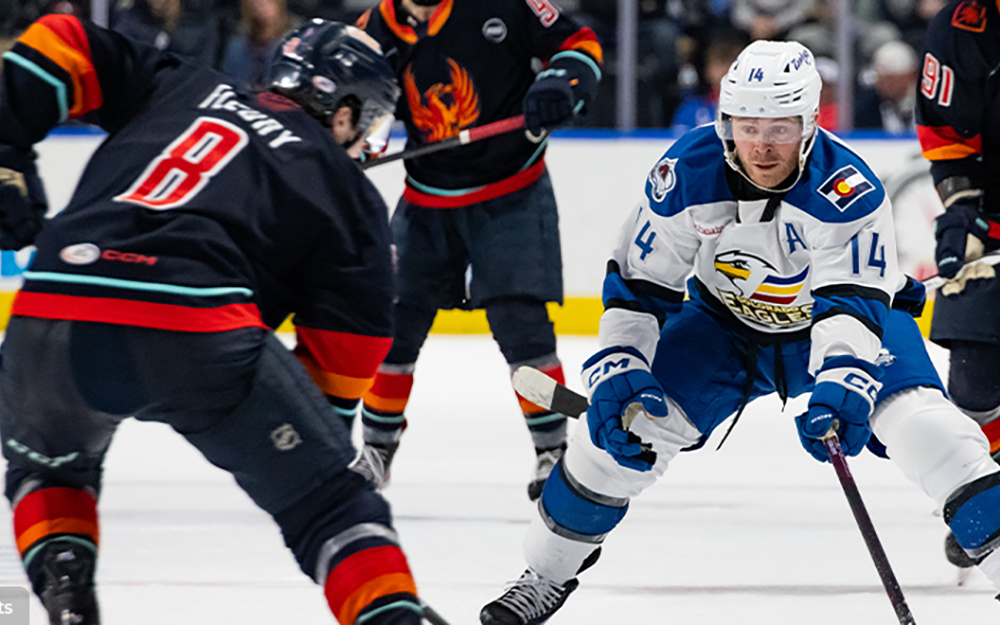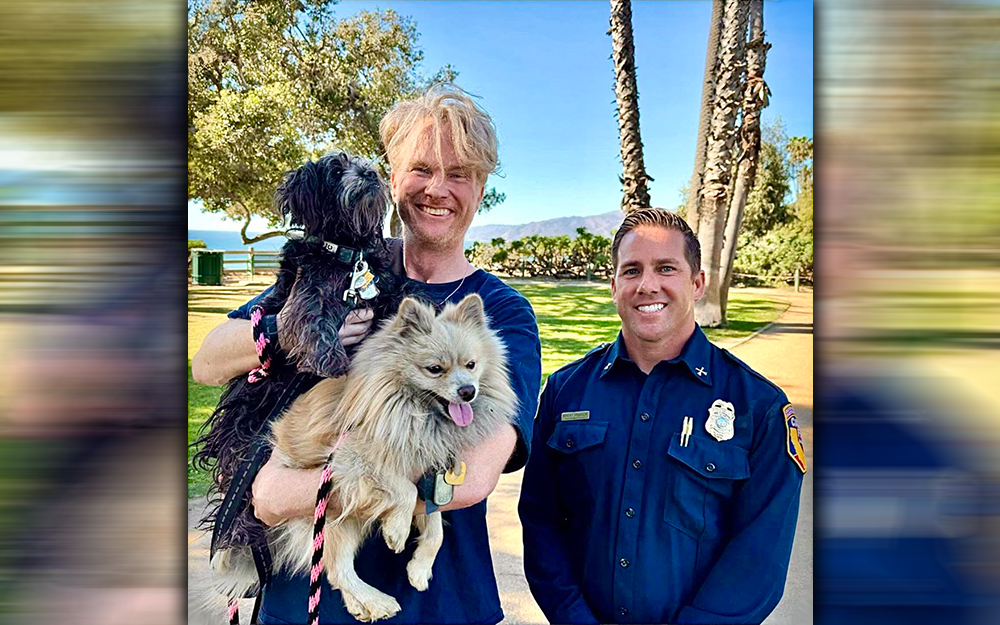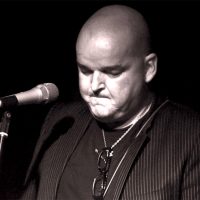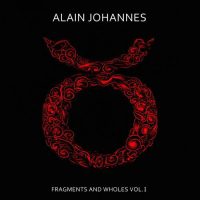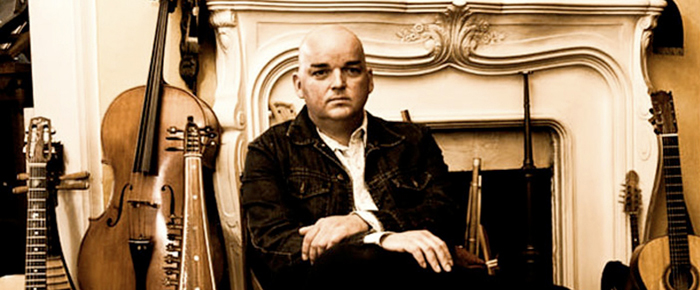
By Eleni P. Austin
Alain Johannes has music in his blood. His mother, Rommi, was part of an international ‘60s pop trio, with her brothers, Alex and Peter. They opened for bands like the Animals and the Rolling Stones.
Johannes is also a citizen of the world. Born in Santiago, Chile in 1962, he spent his childhood in Mexico City. He became obsessed with the Beatles at an early age, buying all their 45’s. It wasn’t until he bought Rubber Soul that he began to understand the power of the full-length album.
By age 12, Alain had relocated to Los Angeles with his mother, younger sister, Karina and beloved grandmother. The Beatles were still a favorite, but his passion for scary movies and World Cup soccer had been supplanted by his new obsessions, Queen, Led Zeppelin and Yes.
Once he started attending Fairfax High School, Alain hooked up with Hillel Slovak. The duo formed their first band with drummer Jack Irons and bassist Todd Strassman. They cycled through a series of names, Chain Reaction, Anthem and Anthym, before settling on What Is This?
Unsatisfied with Strassman’s skills, Slovak recruited another high school pal, Michael “Flea” Balzary. Although he was an accomplished trumpet player, Slovak had to teach Flea the rudiments of the bass. An enthusiastic audience member named Anthony Kiedis became their roadie.
After graduating high school, What Is This? found success playing the L.A. club scene. They released their first EP, entitled Squeezed. Slovak and Irons had also begun a side project with Kiedis, originally known as Tony Flow and the Majestic Masters of Mayhem. Of course, they morphed into the Red Hot Chili Peppers. What Is This? signed with MCA Records, while RHCP received a recording contract from Enigma, an indie imprint of EMI/America.
In 1985, Hillel Slovak left What Is This? and joined RHCP full time. That same year, What Is This? released their eponymous, full-length debut along with another EP, 3 Out Of 5 Live before calling it quits. By this time Alain had met the love of his life, Natasha Schneider.
Natasha had grown up in Russia, behind the Iron Curtain. She began playing music at an early age, but the Soviet Union had such a tight grip on art and culture, that she defected to the United States in 1976. Three years later she was signed to Motown with her band, Black Russian. Theirs was the first Russian band signed to a major American label. They released their debut in 1980, but quickly disbanded.
Alain and Natasha’s first project was Walk The Moon. Although Jack Irons had joined RHCP full time, he played drums on the duo’s one and only album. Through the years he would continue to ping pong between the Peppers and Alain and Natasha’s next project, Eleven.
Between 1991 and 2003, Eleven released five albums. The trio always seemed on the cusp of stardom. The Rock cognoscenti embraced Eleven’s sophisticated sound: A blend of soulful harmonies, intricate melodies and instrumental prowess. Although commercial success eluded the band, their peers took notice.
In 1993, Eleven was the opening band at Pearl Jam’s historic concert at the Empire Polo Club in Indio. (Really, the impetus for the Coachella Festival.) Five years later Alain and Natasha produced the solo debut from Chris Cornell, lead singer for Soundgarden. Their deft production revealed the Grunge God’s inner Beatle.
After recording and touring with Cornell, Alain and Natasha became a secret weapon for discerning L.A. musicians. A chance encounter with Josh Homme led to mixing duties for Queens Of The Stone Age’s Rated R album. Suddenly everyone needed Alain’s magic touch.
In the ensuing years his musicianship and his skills behind the boards enhanced albums from No Doubt, Mondo Generator, Mark Lanegan, Masters Of Reality and Eagles Of Death Metal.
When Nick Oliveri left QOTSA, Alain stepped in on bass and Natasha was added on keys. They added their signature sounds to three albums, Lullabies To Paralyze, Over The Years And Through The Woods and Era Vulgaris.
Their success was bittersweet when first Alain’s mom and then Natasha were diagnosed with cancer in 2007. Natasha lost her fight a year later, while Rommi would battle valiantly until the beginning of 2014.
Alain channeled his grief by throwing himself into his work. He produced and played on Brody Dalle’s post-Distillers project, Spinnerette and engineered the Arctic Monkeys third effort, Humbug.
When Josh Homme, Foo Fighter Dave Grohl and legendary Led Zeppelin bassist John Paul Jones came together to form the super group Them Crooked Vultures, Alain was an integral part of the production. Following the release of their self-titled debut, TCV went on tour, headlining at the 2010 Coachella. Alain was right there, providing rhythm guitar.
2010 also saw the release of Alain’s solo debut, Spark. Literally a one-man band, he played all the instruments for every track. An overt and oblique tribute to Natasha, it was shot through with moments of beauty and sadness.
In the ensuing years, Alain retreated behind the scenes, working with Mark Lanegan, Brody Dalle and most notably on Dave Grohl’s documentary project, Sound City. Now he has returned with his second solo effort, Fragments and Wholes Vol. 1.
The album’s first for tracks, “All The Way,” “Whispering Fields,” “Saturn Wheel” and “Swan And Crow” offer glimpses of Alain’s musical dexterity. “All The Way Down” is a buoyant Magical Mystery ride. Powered by sugar rush acoustic arpeggios, soaring synths and tumbling drums, the lyrics focus on the fifth of the five stages of grief, “acceptance.”
There’s an understated elegance to “Whispering Fields.” Cloaked in plucked acoustic guitar notes, the yearning to reconnect feels palpable. “She asks to be healed, time has taken all she was/Now a specter that living forgot.”
“Saturn Wheel” dirties up the pretty. Whip-crack percussion boomerangs through the instrumentation, colliding with Hammer Of The Gods guitar riff-age. Alain rips a scorching solo that is guaranteed to singe eyebrows.
Finally on “Swan And Crow,” filigreed fret-work blends with punishing percussion. The lyrics offer a metaphor for life, equal parts beautiful and cruel.
Natasha’s presence is felt on both “It Is,” and “Pebble Tears.” The former is brief, but piercing. Anchored by a see-saw rhythm and swooping guitar, Alain pledges eternal fealty. “Don’t you know it’s true, I belong to you/Don’t you know it’s just how it is.”
The jaunty melody of the latter, propelled by quaver-y guitar and sprightly banjo, belies the lyrics’ loneliness and grief. “The clouds in her eyes will storm his heart again/Memory’s bliss singes and scars with a kiss.”
Despite the inherent sadness, this album is suffused with beauty. “Welcome” is an intoxicating ode to freedom, accented by glassy guitar notes gently weeping. “Petal’s Wish” is propelled by stately synths: A desolate tone poem that echoes the epochal heartbreak of Santo & Johnny’s “Sleepwalk.”
“Where Angels Crawl” is an aching cri de couer. Spare and delicate, it’s just Alain and an amplified acoustic guitar, pondering “the weight of hope.”
Other interesting tracks include the majestic “Kaleidoscope” and the brooding “Jack Of Wands.” The album closes with “Let It Gnaw.” Here Alain’s sepulchral vocals crest over layers of skronky guitar. His solo sparks and pinwheels over the controlled chaos. It’s a combative end to a mostly contemplative record.
Once again, Alain plays all the instruments here. It would be faster to catalog the contents of the Guitar Center, than list the myriad instruments Alain Johannes has mastered.
The album title “Fragments And Wholes” came about because all of these songs began as scraps of melody or skeletal sketches that Alain would record on his phone. He then allowed himself one day to flesh out the each song and record it.
For nearly 30 years, Alain Johannes has been the best kept secret in Rock & Roll. With the release of this album, the cat is out of the bag. His protean talent cannot be ignored. It’s time to spread the word.




